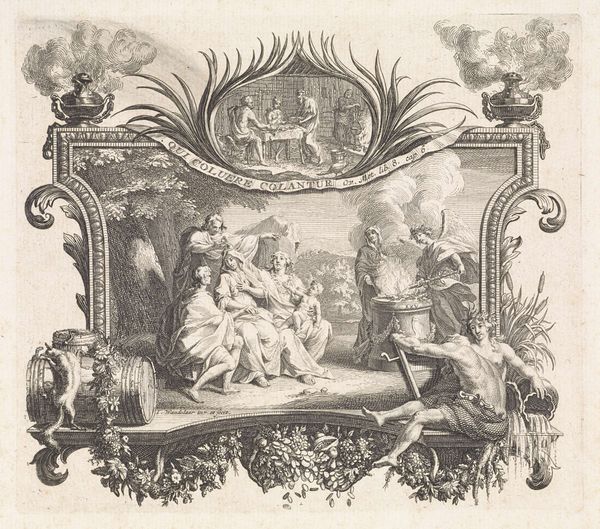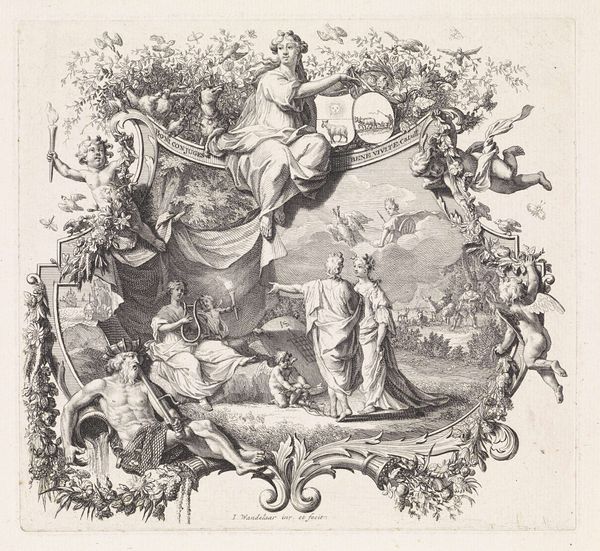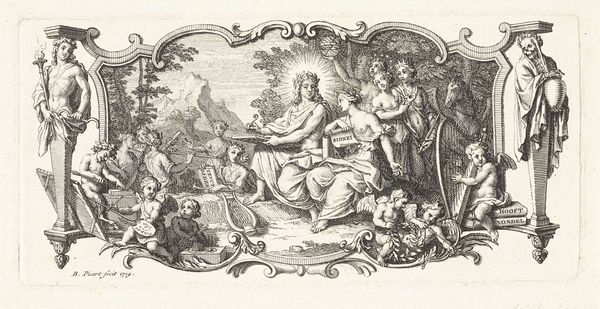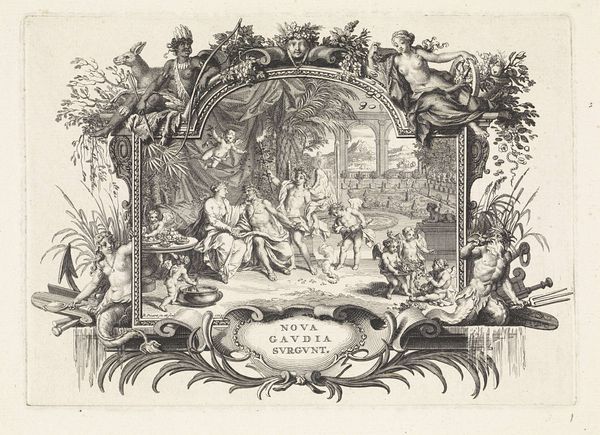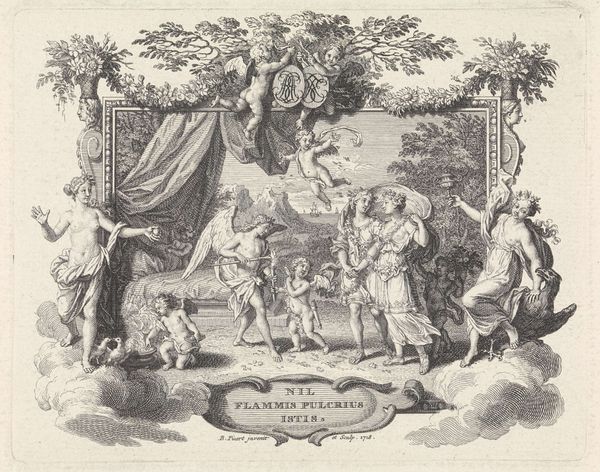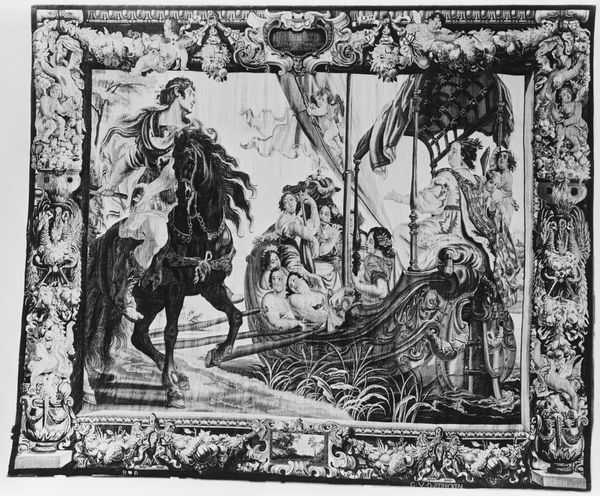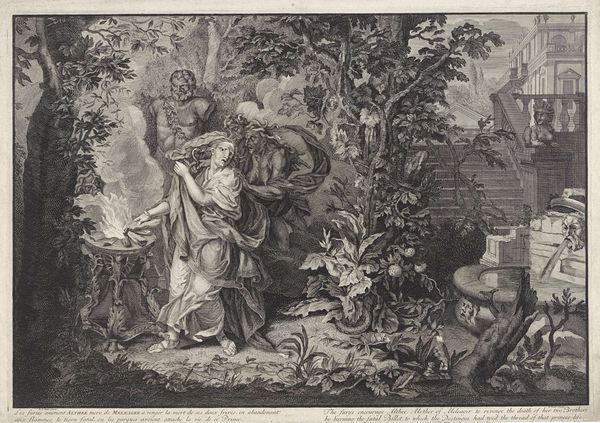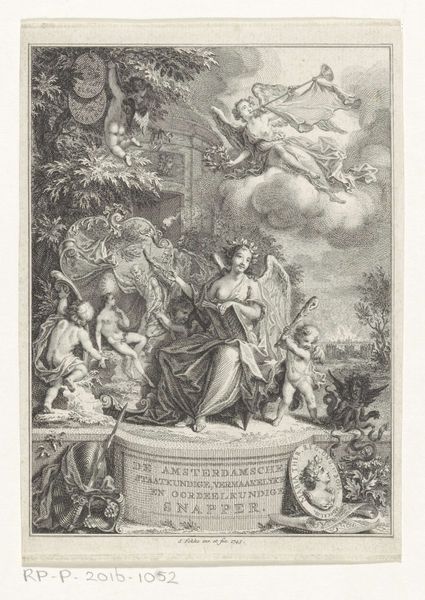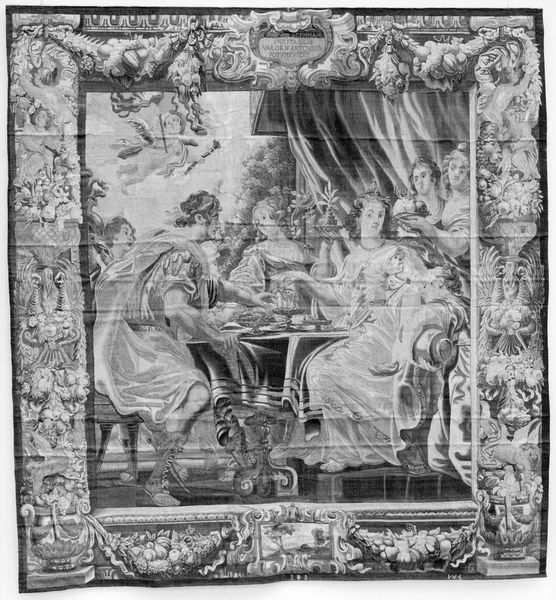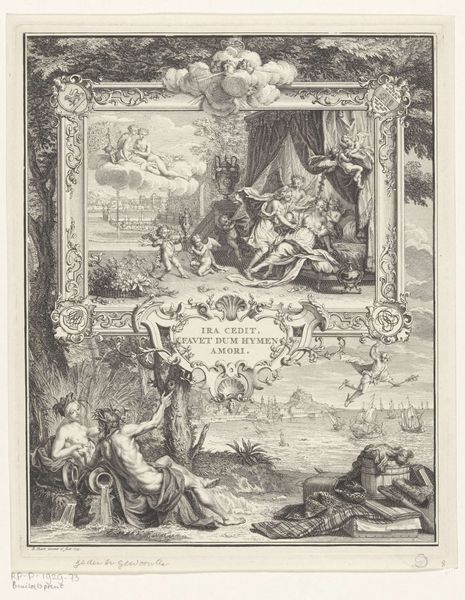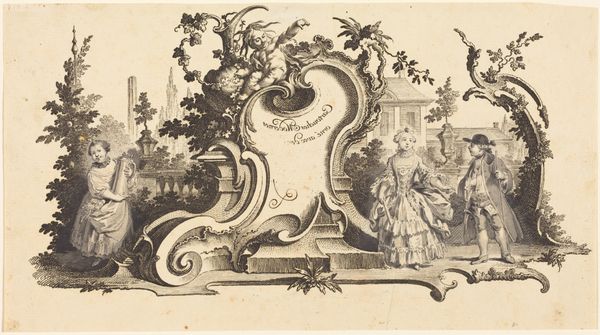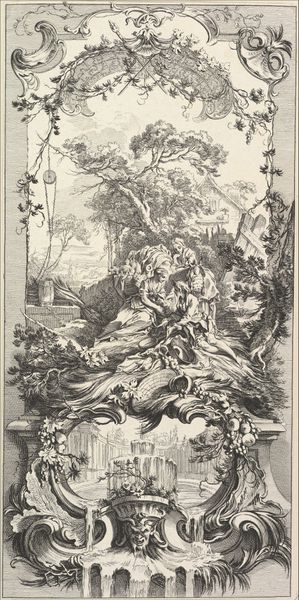
drawing, print, engraving
#
drawing
#
narrative-art
# print
#
landscape
#
genre-painting
#
engraving
#
rococo
Dimensions: plate: 14 x 17 1/8 in. (35.6 x 43.5 cm) sheet: 14 15/16 x 18 11/16 in. (37.9 x 47.5 cm)
Copyright: Public Domain
Editor: This is "Le Temps de L'Apres dinée," a print by François Antoine Aveline, created sometime between 1740 and 1780. It depicts a very elaborate scene in what looks like a garden, with couples strolling, cherubic statues, and flowing fountains. The composition feels incredibly decorative and performative to me. What historical context shaped this Rococo style? Curator: That performative element you noticed is key. Think of the French court and its rituals. The Rococo style, very popular then, functioned as a form of cultural capital. These highly stylized scenes, often commissioned by the aristocracy, visually reinforced social hierarchies and the values of leisure and refinement. Editor: So it's not just pretty, it’s making a statement? I mean, the over-the-top embellishments of the frame around the scene almost feels like the artwork itself is a performance of wealth. Curator: Exactly! The setting, the leisurely activities, even the inclusion of classical imagery through the statues are carefully constructed symbols. The art's patronage also played a significant role. Can you imagine the intended audience and how it reflects Aveline’s artistic goals? Editor: I suppose they are displaying, quite overtly, their access to this leisurely world of beauty. What I initially perceived as beauty becomes more political! It reveals so much about what they considered desirable and appropriate in public life. Curator: Precisely. It challenges the idea of art existing in a vacuum. These kinds of works offer valuable insights into social structures of their time. What new perspective did you gain? Editor: I went from thinking this print was ‘merely’ decorative to understanding it as a reflection of its social and political context. It reminds us to be more critical about what we think we see and who created it. Curator: A perfect example of how historical perspective enriches our experience of art.
Comments
No comments
Be the first to comment and join the conversation on the ultimate creative platform.
